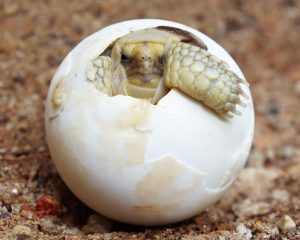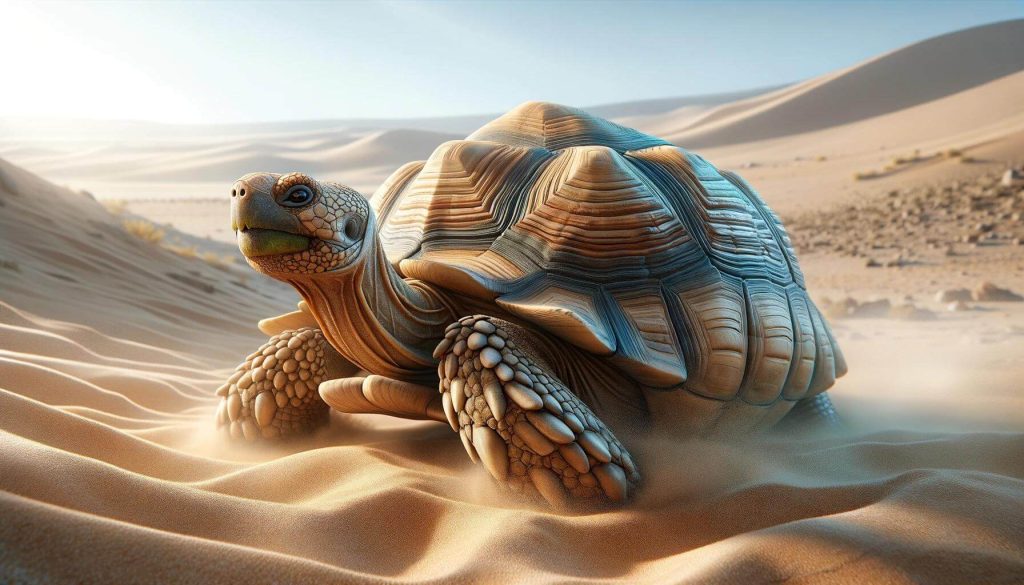
Desert Tortoise Care: Lessons from Coconut
Desert tortoises, resilient and enduring, symbolize the essence of survival in the harshest environments. Yet, their existence is delicately balanced by the care they receive and the challenges they face. In the heartwarming yet heartrending story of Coconut, a cherished desert tortoise, we unearth layers of love, learning, and loss. Over six years, Coconut was not just a pet; she was a part of the family, leaving behind memories filled with lettuce races, the crunch of watermelon, and the warmth of being cared for deeply.
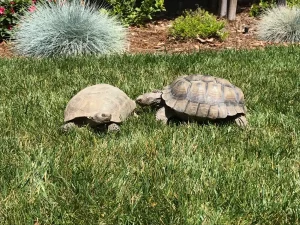
Unlike common pets, desert tortoises present unique care challenges, from their dietary needs to the management of their health issues. Coconut’s struggle with a respiratory condition and difficulty in feeding shines a light on the silent hurdles faced by these creatures and their caregivers. Despite state-of-the-art vet care, including antibiotics, and the dedication of her family, Coconut’s journey was fraught with love and concern, ending in a lesson of life and death under the sunny skies she once roamed.
What then, can Coconut teach us about caring for these resilient yet fragile beings? How does her story guide us in nurturing our own shell-adorned friends through their long lives, ensuring they thrive in our care? This profound question lays the groundwork for understanding not just the joy, but also the responsibilities of keeping a desert tortoise.
Needs and Lifestyle of Tortoises
Desert tortoises are unique creatures, offering a different experience from traditional pets. When thinking about bringing a desert tortoise into your home, it’s important to consider several key aspects of their care, legality, and temperament.
Can Desert Tortoises Be Pets?
Desert tortoises, with their gentle demeanor and unique characteristics, can indeed make fascinating and rewarding pets. They are particularly suited for individuals who appreciate the slower pace and subtle interactions that characterize these creatures. However, it’s crucial to recognize that adopting a desert tortoise is not just a hobby but a significant long-term commitment, as these resilient reptiles often live for 50 years or more, with some even reaching over 80 years in captivity.
Are They Dangerous?
Desert tortoises pose no inherent danger to humans. They are not aggressive and do not bite unless provoked or threatened. Their primary defense mechanism is retracting into their shell. Proper handling and socialization from a young age can further minimize any risks.
Legal Ownership
The legality of owning a desert tortoise varies by location. In some areas, it’s illegal to remove them from the wild, but captive-bred tortoises can be legally acquired. Always check local and state regulations before deciding to keep a desert tortoise as a pet.
Are They Friendly?
While not “friendly” in the conventional sense, desert tortoises can recognize their owners and may approach them out of curiosity or when seeking food. They enjoy being petted on their heads and necks and can become accustomed to handling if done gently and regularly.
Cost of Care
The initial setup for a desert tortoise can be pricey, including the cost of a proper enclosure, lighting, and heating equipment. Ongoing costs include a diet of fresh vegetables and occasional veterinary care. Expect to spend several hundred dollars upfront, with continuous costs for food and health maintenance.
What is the Desert Tortoise Lifespan?
The Desert Tortoise has a notably long lifespan, typically living for 50 to 80 years in the wild. In some cases, especially in captivity where they are well cared for and protected from predators and diseases, they can live even longer, sometimes surpassing 80 years. This remarkable longevity requires a significant commitment from pet owners who choose to keep them as pets.
What is a Desert Tortoise?
Scientific Classification:
- Species: Gopherus agassizii (Mojave Desert Tortoise) and Gopherus morafkai (Sonoran Desert Tortoise).
- Family: Testudinidae.
- Lifespan: Can live up to 50-80 years in the wild and sometimes longer in captivity.
Physical Description:
- Appearance: Desert tortoises have high-domed shells, which are an adaptation to their arid environment. The shell coloration ranges from dark brown to tan, helping them blend into their desert surroundings.
- Size: Adults can reach 10-14 inches in length and weigh between 8-15 pounds, with males generally being larger than females.
- Distinguishing Features: They possess sturdy, elephantine hind legs and flattened forelimbs covered with thick scales, aiding in digging and maneuvering through their rugged habitat.
Habitat and Range:
The Mojave Desert Tortoise (Gopherus agassizii): This species is typically found in the Mojave Desert, which spans southeastern California, southern Nevada, southwestern Utah, and western Arizona.
The Sonoran Desert Tortoise (Gopherus morafkai): This species mainly inhabits the Sonoran Desert, covering large areas of Arizona and extending into southeastern California, much of Sonora (Mexico), and parts of Sinaloa (Mexico).Geographical Range: Desert Tortoises are primarily found in the southwestern United States and in the northern parts of Mexico. There are two main species of desert tortoises:
Tortoise Diet:
- Primary Diet: Herbivores, feeding mainly on grasses, wildflowers, cacti, and other native vegetation. The desert tortoise diet is high in fiber and low in protein, which is crucial for their digestive system.

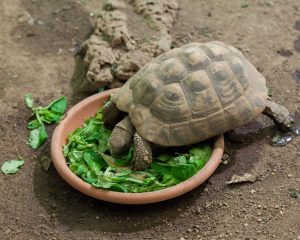
Behavior and Lifestyle:
- Activity: Primarily active during the cooler parts of the day in warmer months. They are known to be more active in the morning and late afternoon.
- Hibernation: Desert tortoises hibernate during the winter months to conserve energy, retreating into burrows to regulate their body temperature and survive the cold.
- Social Structure: Generally solitary, except during the breeding season or when sharing communal burrows.
Reproduction:
- Mating Season: Typically occurs from spring to early summer.
- Nesting: Females lay a clutch of 4-8 eggs, which are incubated for 90-120 days. Hatchlings are extremely vulnerable and have a high mortality rate.
Conservation Status:
- Threats: Habitat loss, human encroachment, predation, disease (like upper respiratory tract disease), and climate change.
- Protection: Listed as a threatened species under the U.S. Endangered Species Act. Conservation efforts include habitat preservation, research, and legal protection against collecting and harm.
Interesting Facts:
- Adaptation: Their bladder can store over 40% of their body weight in water, helping them survive long periods of drought.
- Cultural Significance: The desert tortoise is revered in Native American culture and is a symbol of longevity and endurance.
Insights: The desert tortoise serves as an indicator species, reflecting the health of their desert ecosystem. Their survival is tightly linked to the delicate balance of their environment, making their conservation crucial not only for their species but for the entire desert biome.
| Feature | Description |
|---|---|
| Size | Adults 10-14 inches in length |
| Lifespan | Up to 50 years or more |
| Diet | Herbivorous |
| Habitat | Desert burrows |
| Behavior | Solitary, daytime active |
Fun Facts About Desert Tortoises
| Fact | Detail |
|---|---|
| Water Storage | Can store water in their bladder for up to a year |
| Shell Growth | Shell grows with them throughout their life |
| Self-defense | Retract into their shell for protection |
| Temperature Regulation | Burrow to regulate body temperature |
| Longevity | Can live for decades, often outliving their owners |
| Legality | Legal status varies by location; some require permits |
Insights into Their Shell
Unlike mammals, desert tortoises do not have fur. Instead, they have a hard, protective shell that covers their body. This shell serves as a defense mechanism against predators and harsh environmental conditions.
Pros and Cons of Owning a Desert Tortoise
Known for it’s long lifespan, the desert tortoise pet is a long-term commitment since they can live up to 50 to 80 years.
| Pros | Cons |
|---|---|
| Low maintenance | Requires specific habitat setup |
| Long lifespan | Long-term commitment |
| Non-aggressive | Legal restrictions in some areas |
| Can live outdoors | Vulnerable to respiratory conditions |
| Eco-friendly pet choice | Specific dietary needs |
| Unique bonding experience | Not traditionally “cuddly” |
Creating the Perfect Habitat
Ensuring your desert tortoise has a suitable home is key. This involves setting up a spacious enclosure with correct heating, lighting, and a substrate that mimics their natural environment. Provide a hideout for resting, like Coconut had, to make them feel secure. Incorporating live plants adds to the natural setting, enhancing their quality of life.
Final Thoughts
Coconut’s story touches our hearts and provides key insights into the blessings and challenges of caring for a desert tortoise. Understanding their needs, providing proper care, and sharing moments like lettuce races or their favorite treat, watermelon, contributes to a rewarding experience. However, potential owners must be mindful of the specific environment these creatures thrive in, their dietary needs, and potential health issues, such as respiratory conditions.
Owning a desert tortoise like Coconut is a long-term commitment but one that is filled with lessons of responsibility and the joys of a unique companionship. It’s a reminder that, with the right care and attention, these remarkable animals can be more than just pets; they become cherished family members, leaving indelible marks on our hearts.
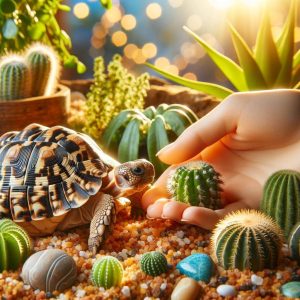


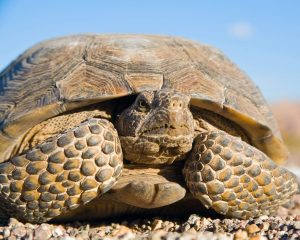
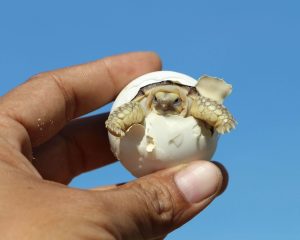
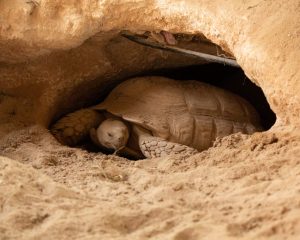


Beginner Guide to Raising Quail at Home
What are the Signs of a Dog Concussion?
What Causes Your Dog’s Ears to Smell Bad?
When your dog’s ears start to emit an unpleasant odor, it might leave you puzzled…
Methimazole Treatment for Cat Hyperthyroidism
Methimazole plays a crucial role in managing feline hyperthyroidism, a condition marked by an overactive…
Got Hummingbirds in your Backyard? Here’s How to Care for Them.
Why Does Your Cat Pee Outside the Litter Box?
Cat’s Litter Box Issues It’s not uncommon for cat owners to face the frustrating dilemma…
